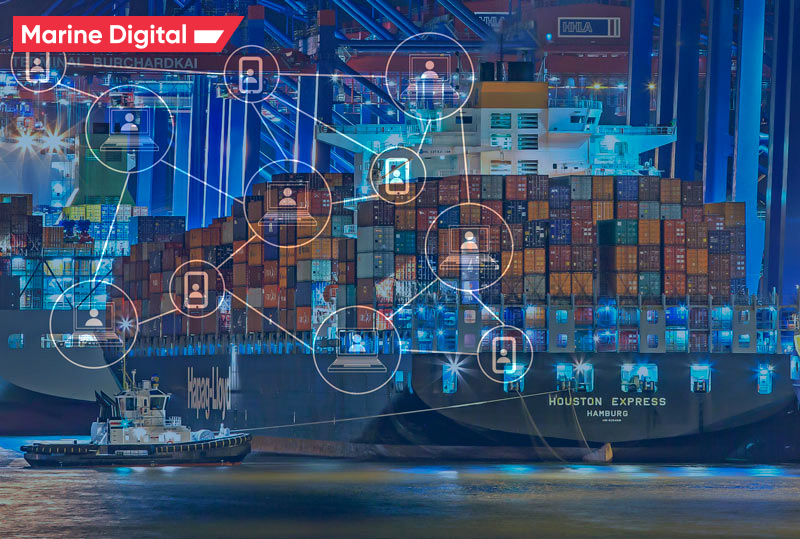Maritime transport technology outlook for 2030
More ships will offer energy efficiency using renewable energy sources to reduce fuel consumption, environmental impact through measures such as improved hydrodynamic design, the use of lightweight materials and advanced hybrid energy storage systems
Financial, regulatory and social pressures will continue to stimulate shipping to reduce its environmental impact and improve safety performance. In the future, more ships will offer superior energy efficiency through measures such as improved fluid dynamics, the use of lightweight materials and advanced hybrid energy storage systems to optimize performance. Ships will also have a lower environmental impact through the use of alternative fuels and renewable energy sources.
Shipping is the most energy efficient mode of transport, but there is room for significant energy efficiency and emissions improvements. Despite recent advances in a number of energy efficiency technologies, the full potential of green technologies has not been realized.
There is still a need for a more comprehensive, holistic approach to energy conservation that integrates all the advanced tools and concepts. For example, big data analysis will lead to better estimation and management of a ship's energy consumption.
Renewable energy sources associated with energy storage and distribution systems can help reduce harmful gas emissions by integrating them with major energy sources. Another important area is the transition to alternative fuels, including electric vehicles and hybrid vehicles. Fuel cells are also a promising technology in the context of clean energy.
Shipping is the most energy efficient mode of transport, but there is room for significant energy efficiency and emissions improvements. Despite recent advances in a number of energy efficiency technologies, the full potential of green technologies has not been realized.
There is still a need for a more comprehensive, holistic approach to energy conservation that integrates all the advanced tools and concepts. For example, big data analysis will lead to better estimation and management of a ship's energy consumption.
Renewable energy sources associated with energy storage and distribution systems can help reduce harmful gas emissions by integrating them with major energy sources. Another important area is the transition to alternative fuels, including electric vehicles and hybrid vehicles. Fuel cells are also a promising technology in the context of clean energy.
In the future, more ships will offer superior energy efficiency using renewable energy sources to reduce fuel consumption, eliminate harmful emissions and reduce environmental impact. These improvements will come through measures such as improved hydrodynamic design, the use of lightweight materials and advanced hybrid energy storage systems to optimize performance. Digitalization will drive automation, leading to the development of smart ships and positively impacting safety and environmental performance.
Transforming technologies will lead to advances in ship design and operation, smart manufacturing and blue growth. These technologies will undoubtedly enhance the competitiveness, safety and environmental protection of the maritime industry.
Transforming technologies will lead to advances in ship design and operation, smart manufacturing and blue growth. These technologies will undoubtedly enhance the competitiveness, safety and environmental protection of the maritime industry.
Green ships and shipping
Safety and security
Digitalization will drive automation and positively impact safety and environmental performance. New cloud technologies will significantly affect the design, manufacture and operation of ships and their components. The Internet of Things will help deliver smart, shore-based vessels. Cybersecurity and the human factor will become important issues with digitization and automation.
Next-generation ship-to-shore communications will help shipowners reduce costs, avoid costly repairs and improve operational efficiency. Digitization, sensors and automated processes, and the introduction of big data into maritime operations will lead to optimized energy and fuel efficiency, vessel performance and condition monitoring, and real-time weather data and routing.
Greater automation of systems, smart sensors and global networks for ship-to-shore data transfer will facilitate remote and semi- or fully autonomous asset management, such as autonomous ships and smart ports. The relationship between maritime operations and onshore operations centers will enhance shoreline support and control. This will require protecting systems and operations from cyberattacks.
Digitization has also enabled more far-reaching concepts such as big data, the Internet of Things, blockchain and cloud computing, which will provide the shipping industry with new ways to collect, process and share valuable data in real time.
Next-generation ship-to-shore communications will help shipowners reduce costs, avoid costly repairs and improve operational efficiency. Digitization, sensors and automated processes, and the introduction of big data into maritime operations will lead to optimized energy and fuel efficiency, vessel performance and condition monitoring, and real-time weather data and routing.
Greater automation of systems, smart sensors and global networks for ship-to-shore data transfer will facilitate remote and semi- or fully autonomous asset management, such as autonomous ships and smart ports. The relationship between maritime operations and onshore operations centers will enhance shoreline support and control. This will require protecting systems and operations from cyberattacks.
Digitization has also enabled more far-reaching concepts such as big data, the Internet of Things, blockchain and cloud computing, which will provide the shipping industry with new ways to collect, process and share valuable data in real time.
Safety and security and pollution prevention are of paramount importance for maritime transport. Serious incidents at sea continue despite significant investment and new technology.
The consequences of serious maritime accidents, resulting in loss of life, pollution and loss of cargo, directly affect European society and economy. Human factors and training are essential to reduce incidents at sea and manage new technology applications, especially human-machine interactions.
The IMO's expanded target standards (GBS) approach will include a safety level approach (GBS-SLA) as a future means of enhancing maritime safety. However, it is widely accepted that the implementation of the GBS-SLA will require the development of a procedure to determine future risk levels and a procedure to match risk levels to specific ship functions.
Terrorist threats show no signs of diminishing, and ships and ports will continue to face the threat of terrorist attacks. In addition, very serious concerns remain about the cybersecurity of acts of piracy and armed robbery at sea. The EU Maritime Security Strategy (EUMSS) and Action Plan provide a comprehensive strategy against all global maritime challenges that could affect people, activities or infrastructure in the EU.
The consequences of serious maritime accidents, resulting in loss of life, pollution and loss of cargo, directly affect European society and economy. Human factors and training are essential to reduce incidents at sea and manage new technology applications, especially human-machine interactions.
The IMO's expanded target standards (GBS) approach will include a safety level approach (GBS-SLA) as a future means of enhancing maritime safety. However, it is widely accepted that the implementation of the GBS-SLA will require the development of a procedure to determine future risk levels and a procedure to match risk levels to specific ship functions.
Terrorist threats show no signs of diminishing, and ships and ports will continue to face the threat of terrorist attacks. In addition, very serious concerns remain about the cybersecurity of acts of piracy and armed robbery at sea. The EU Maritime Security Strategy (EUMSS) and Action Plan provide a comprehensive strategy against all global maritime challenges that could affect people, activities or infrastructure in the EU.
Connected and automated maritime transport
Human factors, which account for up to 80 percent of maritime accidents and incidents, defined as actions or omissions, intentional or otherwise, adversely affect the proper functioning of a particular system or the success of a particular task.
The causes of human error in ship operation are numerous: fatigue, stress, low skill, negligence, language and cultural differences on board ships, etc. Therefore, understanding the human factor requires research and analysis of equipment design, human-operator interaction with equipment, and procedures. followed by the crew and management.
The changes in human behavior required to interact with autonomous ships and associated support systems will be significant. Consequently, the maritime human-machine interface and the associated human factor will be critical, especially in complex, high-risk operations.
Since cybersecurity risks are likely to increase with the introduction of automation and autonomous ships, an international effort will be required to address this topic.
The causes of human error in ship operation are numerous: fatigue, stress, low skill, negligence, language and cultural differences on board ships, etc. Therefore, understanding the human factor requires research and analysis of equipment design, human-operator interaction with equipment, and procedures. followed by the crew and management.
The changes in human behavior required to interact with autonomous ships and associated support systems will be significant. Consequently, the maritime human-machine interface and the associated human factor will be critical, especially in complex, high-risk operations.
Since cybersecurity risks are likely to increase with the introduction of automation and autonomous ships, an international effort will be required to address this topic.
Human factors

An integrated logistics and transport system represents the ultimate integration of the new and emerging water transport system into other transport systems, as well as supply and production chains. In the maritime context, the focus is on physical and digital connectivity to supply and production chains.
The main problem faced by logistics service providers is that the transport and logistics service sectors are heterogeneous and fragmented. This currently limits service integration and resource combination, especially in door-to-door supply chains. An integrated ICT infrastructure for transport and logistics will be mandatory for all modes of transport.
In the maritime transport sector, huge amounts of data are available that can support new business opportunities to improve logistics and ship operations. Value-added services for better management of intermodal freight transport will increase safety, security, environmental performance and competitiveness.
More efficient use of available data and the use of information and communication technologies in transport and logistics offers numerous potential benefits, such as improved traffic management in ports and at sea, and reduced administrative costs for regulatory compliance.
The connection of maritime transport with other modes of transport, including inland waterways, will eventually become seamless. Smart ships will communicate with smart ports to limit congestion, waiting times, and therefore costs. Smart boats automatically adapt their sailing speed to match the slots in the harbor.
The main problem faced by logistics service providers is that the transport and logistics service sectors are heterogeneous and fragmented. This currently limits service integration and resource combination, especially in door-to-door supply chains. An integrated ICT infrastructure for transport and logistics will be mandatory for all modes of transport.
In the maritime transport sector, huge amounts of data are available that can support new business opportunities to improve logistics and ship operations. Value-added services for better management of intermodal freight transport will increase safety, security, environmental performance and competitiveness.
More efficient use of available data and the use of information and communication technologies in transport and logistics offers numerous potential benefits, such as improved traffic management in ports and at sea, and reduced administrative costs for regulatory compliance.
The connection of maritime transport with other modes of transport, including inland waterways, will eventually become seamless. Smart ships will communicate with smart ports to limit congestion, waiting times, and therefore costs. Smart boats automatically adapt their sailing speed to match the slots in the harbor.
Integrated transport logistics

Maritime transport in the Arctic is gaining widespread attention due to the growing strategic importance of the region. Global warming and, as a result, a decrease in the ice sheet made the Northern Sea Route more possible. Technological advances allowing operations in hostile and remote environments have also opened up prospects for new transport routes in the Arctic regions. There will also be new opportunities in economic sectors such as fisheries, oil and gas, transport and tourism, as tourist cruise ships are likely to visit both polar regions more often.
These economic activities will require new developments in monitoring systems, emergency response systems and search and rescue services in harsh waters.
Ships and structures operating in extremely cold temperatures and subject to abnormal loads and forces will require appropriate design, structure and equipment to operate in weather conditions that are often subject to rapid changes and address the problem of human and system interaction.
Extremely low temperatures are also important for the materials, equipment and systems used in the environment; it also affects the ship's performance, crew and related human factors. It will also be necessary to solve the special problems of human-system interaction in the Arctic regions.
Real-time vessel monitoring and ice movement forecasts, combined with meteorological ocean data, will provide robust decision-making for safe and efficient Arctic voyages and other activities. This integrated information will also assist with oil spill incidents and search and rescue operations.
These economic activities will require new developments in monitoring systems, emergency response systems and search and rescue services in harsh waters.
Ships and structures operating in extremely cold temperatures and subject to abnormal loads and forces will require appropriate design, structure and equipment to operate in weather conditions that are often subject to rapid changes and address the problem of human and system interaction.
Extremely low temperatures are also important for the materials, equipment and systems used in the environment; it also affects the ship's performance, crew and related human factors. It will also be necessary to solve the special problems of human-system interaction in the Arctic regions.
Real-time vessel monitoring and ice movement forecasts, combined with meteorological ocean data, will provide robust decision-making for safe and efficient Arctic voyages and other activities. This integrated information will also assist with oil spill incidents and search and rescue operations.
Arctic opportunities

Given the new challenges caused by the scarcity of resources and available land, the oceans are the only way to meet the growing needs of humankind for food, energy, water, organic or mineral resources, etc.
This necessitates significant offshore industrial activities and the provision of ancillary services. While current offshore economic activities are mainly related to maritime transport and oil and gas exploration, they are not part of the "blue growth economy".
Blue Growth's activities are more diverse and include: renewable energies, aggregate mining, shallow and deep sea mining, offshore oil and gas, shipping, yachting and marinas, cruise tourism, coastal tourism, fishing, maritime safety, biotechnology, desalination , aquaculture, fish. agriculture, etc.
Smart and adaptable materials and designs are required to improve the ability of ships or offshore platforms to operate in ever-changing environments and conditions.
Many of these new economic activities are extremely risky and marginal from the outset. However, these risks can be mitigated by combining different activities at the same site while ensuring safety and delivery.
Blue Growth is a long-term strategy to support sustainable growth in the maritime and maritime sectors as a whole. The sea and oceans are the driving force behind the European economy and have great potential for innovation and growth.
Blue Growth is a maritime contribution to the achievement of the Europe 2020 strategy goals of smart, sustainable and inclusive growth. It makes an important contribution to addressing today's long-term challenges such as globalization and competitiveness, global warming and climate change, growing scarcity of natural resources, urbanization and concentration in coastal regions, and demographic change.
Read also Maritime technology challenges 2030
and Transformational technologies in shipping industry
This necessitates significant offshore industrial activities and the provision of ancillary services. While current offshore economic activities are mainly related to maritime transport and oil and gas exploration, they are not part of the "blue growth economy".
Blue Growth's activities are more diverse and include: renewable energies, aggregate mining, shallow and deep sea mining, offshore oil and gas, shipping, yachting and marinas, cruise tourism, coastal tourism, fishing, maritime safety, biotechnology, desalination , aquaculture, fish. agriculture, etc.
Smart and adaptable materials and designs are required to improve the ability of ships or offshore platforms to operate in ever-changing environments and conditions.
Many of these new economic activities are extremely risky and marginal from the outset. However, these risks can be mitigated by combining different activities at the same site while ensuring safety and delivery.
Blue Growth is a long-term strategy to support sustainable growth in the maritime and maritime sectors as a whole. The sea and oceans are the driving force behind the European economy and have great potential for innovation and growth.
Blue Growth is a maritime contribution to the achievement of the Europe 2020 strategy goals of smart, sustainable and inclusive growth. It makes an important contribution to addressing today's long-term challenges such as globalization and competitiveness, global warming and climate change, growing scarcity of natural resources, urbanization and concentration in coastal regions, and demographic change.
Read also Maritime technology challenges 2030
and Transformational technologies in shipping industry
Blue growth
Materials and production
The effects of noise and vibration from ships (propeller noise, cavitation noise, etc.) include concerns for both passengers and harbor residents, and possibly health concerns for the crew. Prolonged exposure to high levels of noise and vibration causes fatigue, reduces work efficiency, and can impair hearing.
The IMO Code on Noise Levels on Board Ships, adopted by resolution MSC.337 (91), recognized the need to establish mandatory noise level limits for machinery spaces, control rooms, workshops, accommodation and other spaces on board ships and entered into force on 1 July 2014.
Work is under way to recognize that international legislation is required to address underwater sound as an aspect of pollution. For example, ISO develops international standards for sound from ships and pile driving. However, further work is required as the available experimental data on underwater noise and emissions levels are still very limited.
The IMO Code on Noise Levels on Board Ships, adopted by resolution MSC.337 (91), recognized the need to establish mandatory noise level limits for machinery spaces, control rooms, workshops, accommodation and other spaces on board ships and entered into force on 1 July 2014.
Work is under way to recognize that international legislation is required to address underwater sound as an aspect of pollution. For example, ISO develops international standards for sound from ships and pile driving. However, further work is required as the available experimental data on underwater noise and emissions levels are still very limited.
Materials and structures, as well as the processes of their manufacture, assembly, equipment, repair, modernization and disposal, have an important impact on life cycle costs, environmental impact and safety of modern ships.
The ships of the future will see more and more different materials in their designs and equipment. By using reasonable materials and design decisions, courts will become more flexible and efficient. New materials for marine applications are very promising for both weight reduction and environmental protection. This will provide a significant increase in efficiency, which will reduce the body resistance. The use of Big Data will also help make marine products more suitable for new and extreme operating conditions.
Manufacturing based on cyber-physical systems such as digitization, augmented reality, simulation and optimization, human-robot interaction and the Internet of Things can transform traditional shipyard processes, leading to significant changes for employees and production for the shipyards of the future. These systems will improve lifecycle management and proactive maintenance for marine vessels.
The ships of the future will see more and more different materials in their designs and equipment. By using reasonable materials and design decisions, courts will become more flexible and efficient. New materials for marine applications are very promising for both weight reduction and environmental protection. This will provide a significant increase in efficiency, which will reduce the body resistance. The use of Big Data will also help make marine products more suitable for new and extreme operating conditions.
Manufacturing based on cyber-physical systems such as digitization, augmented reality, simulation and optimization, human-robot interaction and the Internet of Things can transform traditional shipyard processes, leading to significant changes for employees and production for the shipyards of the future. These systems will improve lifecycle management and proactive maintenance for marine vessels.
Acoustic and underwater noise

TOP 5 factors contributing to lower fuel costs for Shipping companies
Get a presentation with a full description of the features and free pilot project with trial of Marine Digital FOS for 2 months
"Clicking the button, you consent to the processing of personal data and agree to the privacy policy"

Get an overview "The Pathway to Zero Carbon Shipping:
IMO Compliance and CII Optimization through SEEMP" on email and download it for FREE! Leave your email now!
"Clicking the button, you consent to the processing of personal data and agree to the privacy policy, as well as consent to subscribe to the newsletter. "
Аdvantage of Fuel Optimization System from Marine Digital:

Marine Digital FOS can be integrated with other system and third-party's solutions through the API. To implement vessel performance monitoring for any vessel, we are using mathematical algorithms, machine learning and the same equipment as in FOS. The more data we collect from vessels, the more precise reports and recommendations our system will perform according to your individual requirements in fleet management.
If you have any questions about the solutions and the Marine Digital System platform, write to us, we will be happy to answer
If you have any questions about the solutions and the Marine Digital System platform, write to us, we will be happy to answer

Increased business process speed

Reducing to zero the number of errors

Best offer to the clients

Reduction in operating expenses
Have a questions?





